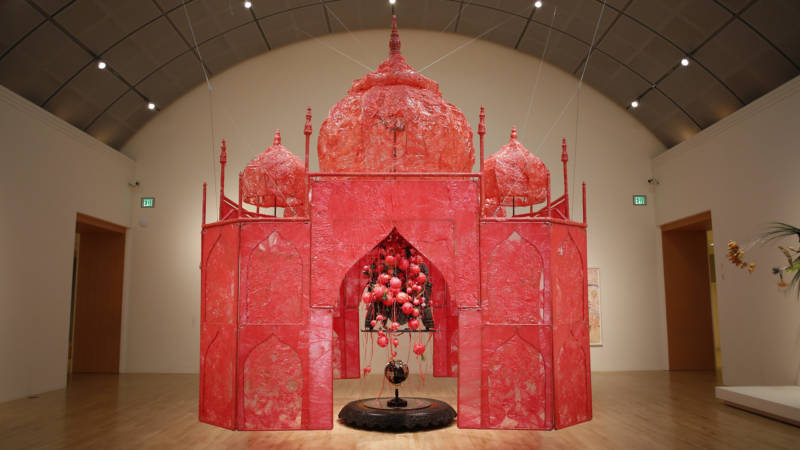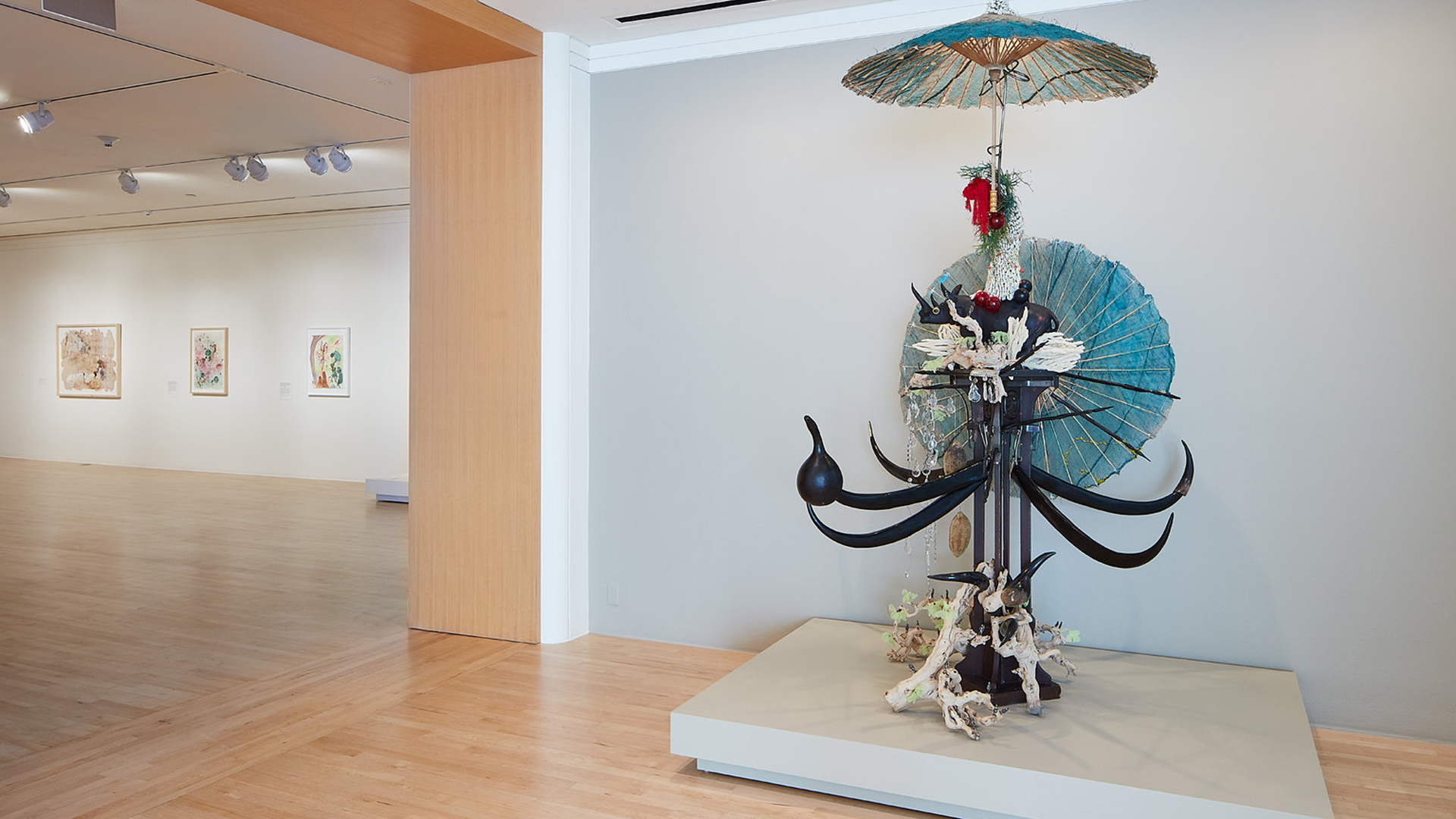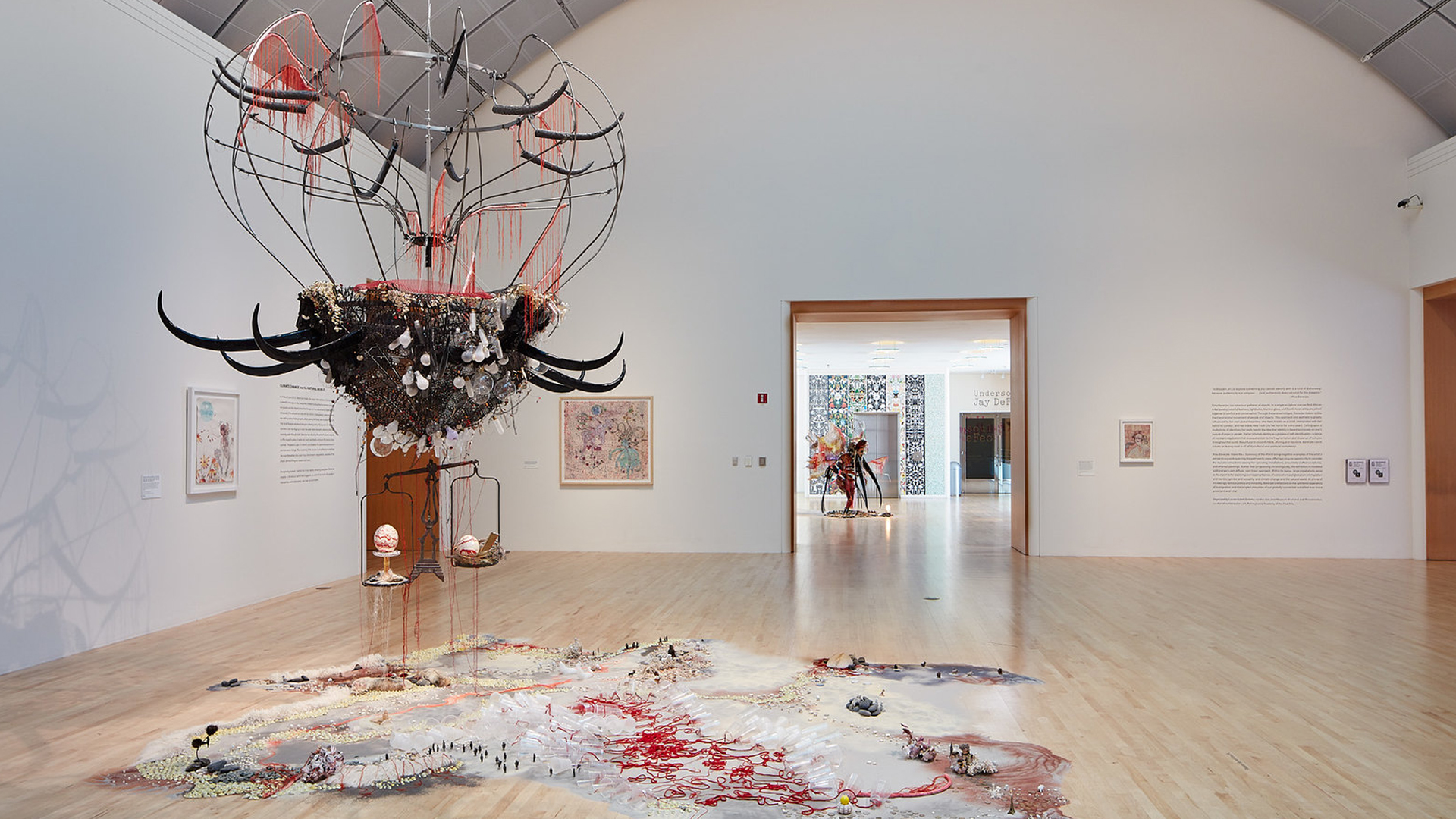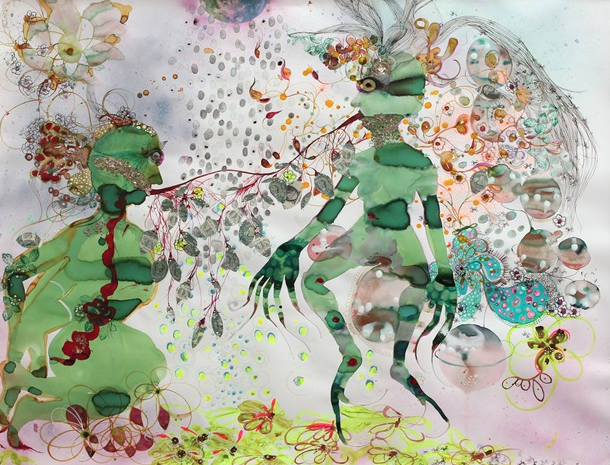When I stepped inside New York-based artist Rina Banerjee’s flamingo-pink, floating Taj Mahal, it felt like the artist had wrapped me in a valentine the size of a small house. The sculpture Take me, take me, take me…to the Palace of love is suspended from the ceiling at the San Jose Museum of Art, held aloft by wires a few feet above the ground. It’s not an exact replica of Shah Jahan’s memorial to his wife Mumtaz, but you can’t mistake the turrets and distinctive window shapes for any other structure on Earth.
Make Me a Summary of the World—Banerjee’s career retrospective, first shown at the Pennsylvania Academy of Fine Arts and on a U.S. tour that runs through 2021—fills three galleries on the SJMA’s top floor with so many sculptures and paintings they spill out into the hallways. Nothing about her work suggests containment. Even the acrylic paintings that simulate watercolors bleed into and past the edges of their frames. Meanings, too, and when and where you can find or interpret them, are just as fluid.
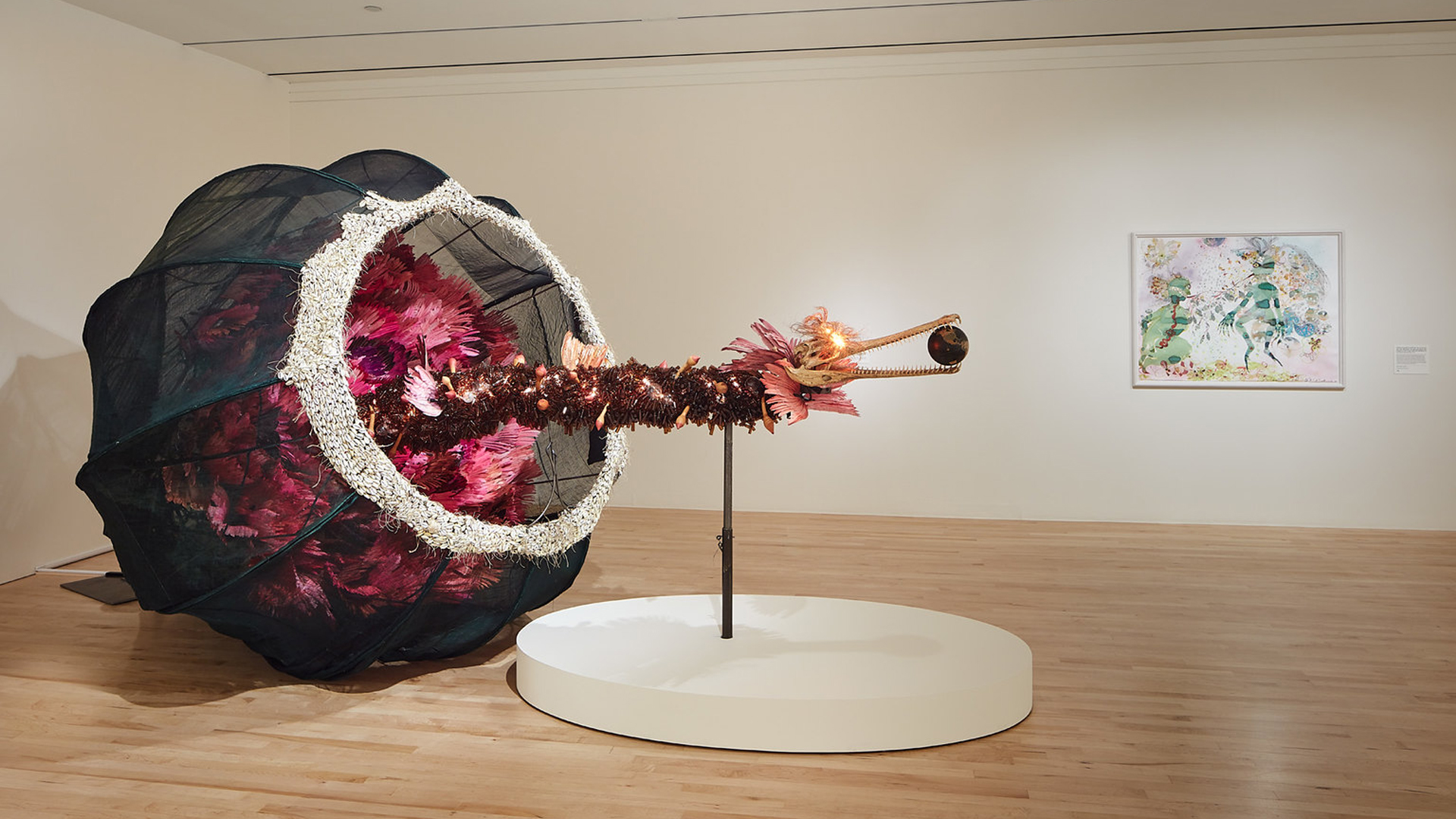
In PAFA curator Jodi Throckmorton’s essay in the exhibition catalog, she writes, “Despite its obvious beauty and sensuality, Banerjee’s work oozes with this Orientalist unease: her gold-threaded fabrics, jeweled surfaces and Anglo-Indian antiques are steeped in the atrocities of colonialism.” (The retrospective is co-curated by the SJMA’s Lauren Schell Dickens.) After reading this, I felt guilty I’d taken such pleasure in not only Palace of love, but in each subsequent visit I made to the show.
I wasn’t ignoring the sharp, pointed horns that jut out of a dozen sculptures, or the splendid row of gharial crocodile teeth in The world as burnt fruit. I looked closely at the acrylic ink on paper piece Queen of Cuddles, a demon-faced mergirl lashing out with her long, froggy tongue. But I didn’t recoil from her zoological phantasms or their sense of menace.
Instead, I was dazzled by Banerjee’s approach to organizing glass vials, cowrie shells and feathers into strangely organic arrangements of disparate parts. She’s a re-animator, making new and unfamiliar beasts rise up from death. The intricacy of her nests within nests, within even more nests, indicate that she learned from industrious birds how to recreate their homes.
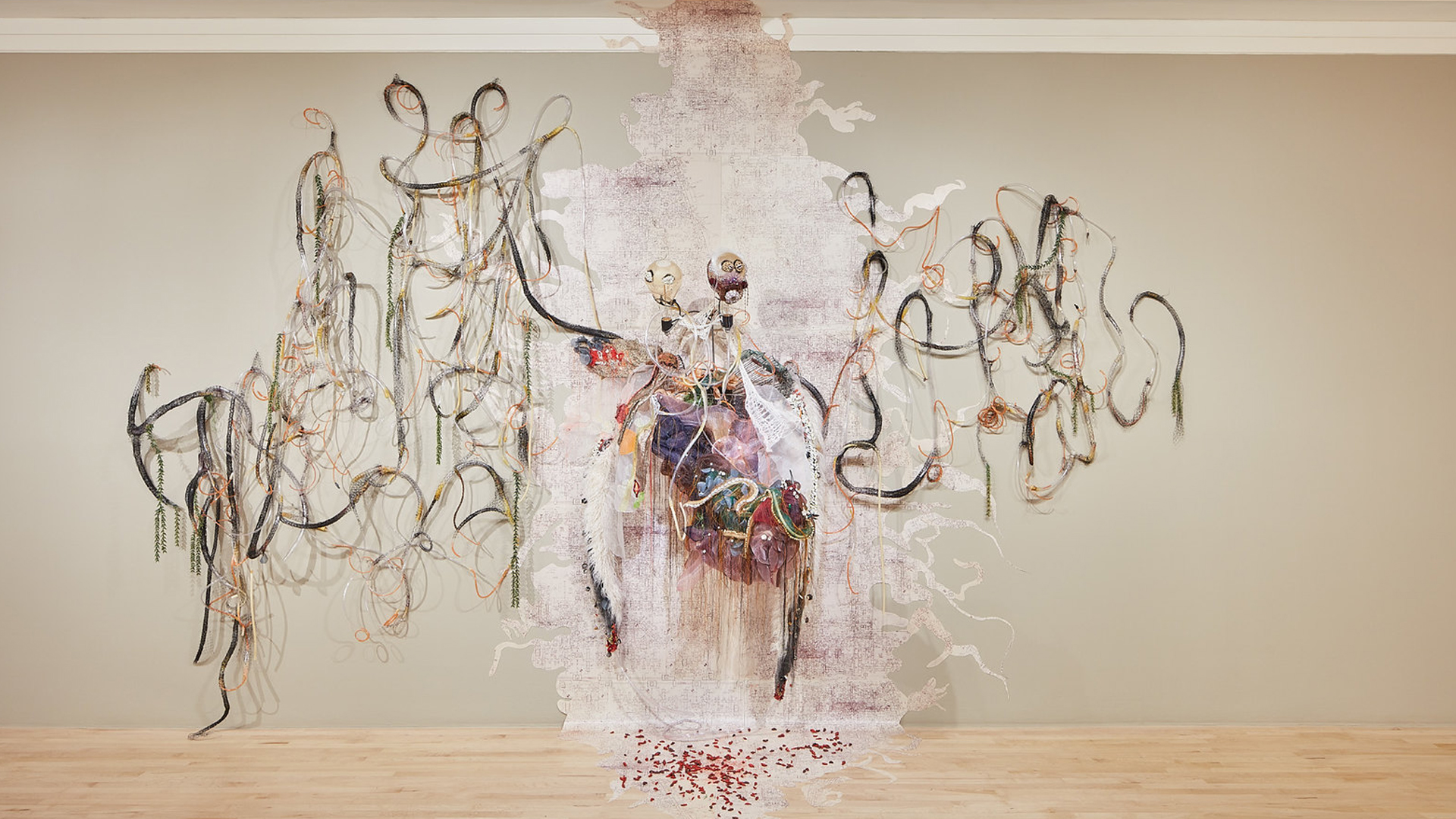
Where an academic might be more inclined to identify such themes as globalism or the fungibility of cultural and gender identities, I marveled at her skills and suspended any analytic response. That is, until I spoke with Banerjee on the phone. I asked her about that tension—between the surface level beauty and the underlying narratives that contradict or undermine it.
